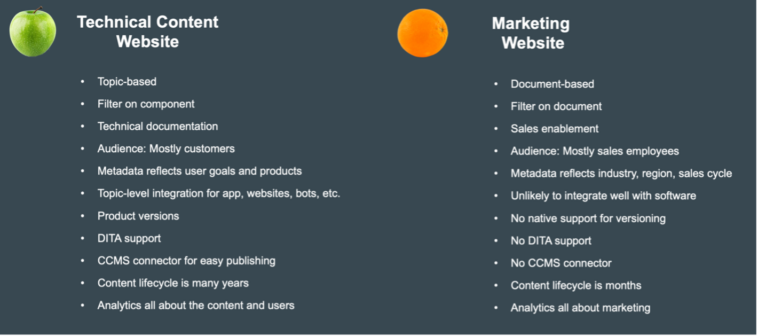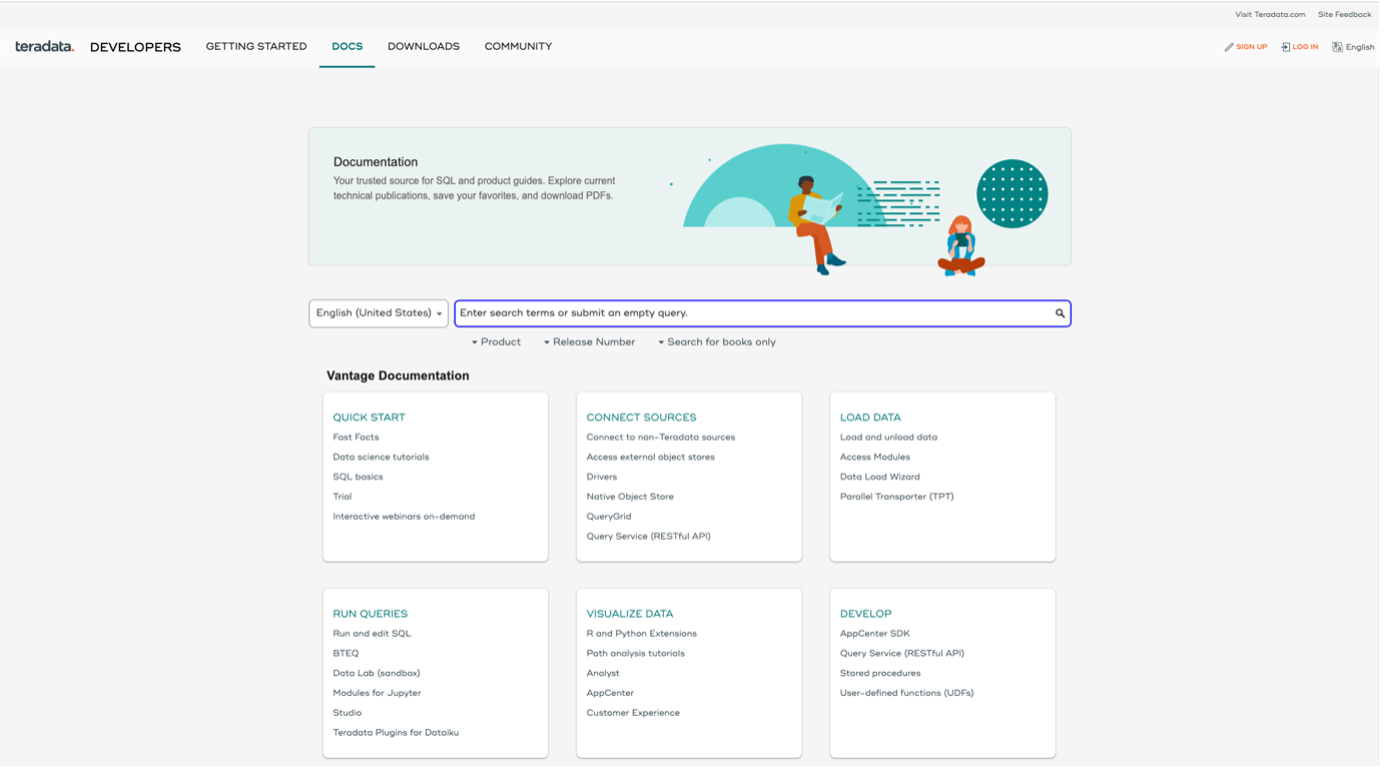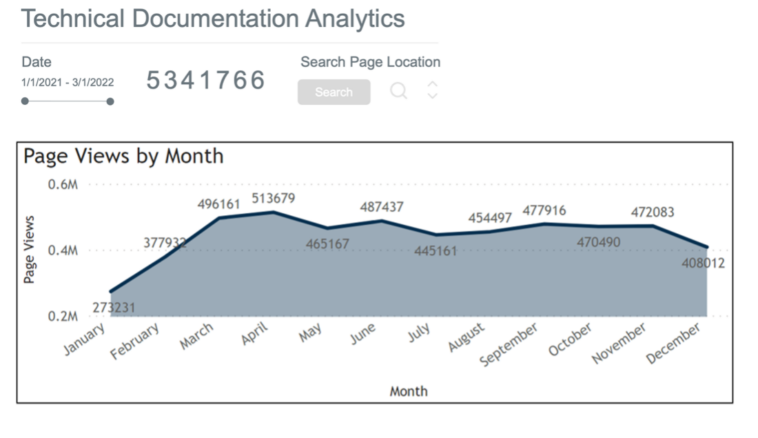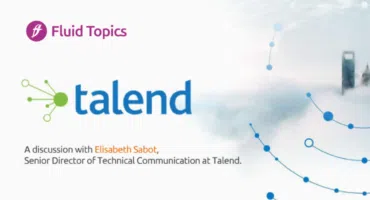Teradata is the connected multi-cloud data platform for enterprise analytics. The company, which has been recognized by market researcher Gartner® as a leader in Cloud Database Management Systems, offers through Teradata Vantage, a unified set of analytics capabilities to manage everything from freight transportation and logistics to performing predictive analytics for sales, forecasting and supply change management.
The solution is delivered in a consistent manner in the cloud, on multiple clouds, on-premises, or any combination thereof.
As such, the company needs to serve technical product documentation to various audiences including administrators, data analysts, business analysts and developers. Teradata’s Information Engineering department consists of 30 associates – writers, architects and technical tool specialists who support over 100 products – cloud, on-premises, hardware, software, analytics.

We sat down with Elizabeth “Beth” McFadden, Technical Project Manager for Content Operations at Teradata to explore the company’s challenges and lessons learned after moving their vast enterprise content from PDF downloads to web-based dynamic delivery.
The Teradata Challenges
Historically, Teradata created technical content using 6 different tools. The customer experience for finding and accessing the right content in the place and moment of need was dreadful.
In fact, Teradata’s documentation was published in PDF format and sometimes in HTML and was scattered across:
- The info.teradata.com website
- SUPR (Single Unified Procedures Repository), an internal website for field and support personnel
- DEVX (Developer Exchange), a website for developers owned and operated by the engineering team
- In-product help
- Another website with HTML content used for a single release of a single product
On top of that, these channels, all had different user interfaces (UI) and search mechanisms. At the time, mobile phones and tablets were beginning to gain ground but only one of these UIs incorporated a responsive design.
“The lowest level of granularity was a book and the mix of disparate systems and tools led to inefficiencies and a frustrating content experience,” said Beth McFadden.
The information was so dispersed that the content publishing experience was inconsistent and unfriendly. As an example, publishing a single book typically meant three publishing formats, two tools and three resources to publish to all the channels.
Additionally, the release of new content was tightly integrated with the software deployment process which prevented the Information Engineering team from updating it as frequently as needed and providing the latest information.
So, after years of storing documents all over the place and maintaining different formats for multiple channels, the company realized that they needed to provide a unified content experience for their global customers.
In a nutshell
The challenges
-
Content created using 6 different tools
-
Documentation scattered across many touch points with disparate user interfaces
-
Need to update technical documentation faster, decoupled from the product release
The results
-
Real-time publishing directly from Ixiasoft
-
Single, unified knowledge center, no matter the initial source and format
-
Increased visibility with 5 million visits on the portal within the first year
The Detour
On their move to dynamic content delivery, the Information Engineering team met with the IT department to get budget approval. Rightly so, the IT department wondered why the team couldn’t use the Marketing team’s Content Management Solution.
“This is a perfectly legitimate question from organizations who do not understand the difference between marketing content and technical content. Any team wanting to move to Dynamic Content Delivery must be prepared to educate their funding organization in the ways of technical content delivery”, Beth explained.
There are fundamental differences between the two platforms and it’s important to highlight them.

“Teradata’s technical documentation website is now the company’s most visited website with over 5 million visits in the last year alone“
The Fluid Topics Solution
After evaluating a variety of potential vendors, Teradata identified Fluid Topics as the right Content Publishing Platform to solve their challenges.
Teradata launched a new cloud-based Content Delivery Platform, powered by Fluid Topics. The platform collects and unifies the company’s technical content and publishes it on the documentation portal at the click of a button.
- Real-time publishing
The DITA content is created with IXIASOFT using oXygen XML Author. A dedicated connector enables Beth’s team to publish directly to Fluid Topics from IXIASOFT, offering a frictionless delivery experience. The company also publishes unstructured formats like Word, Excel and PDF or other structured content like HTML and Markdown to Fluid Topics. The company’s tech doc team now saves hours of tedious document formatting.
They can also automatically publish content as soon as it’s approved and as often as needed without requiring assistance from the IT department. By connecting in real-time to the sources of information, Fluid Topics keeps the documentation live and accurate on the user side at any time.
- Single, unified user experience
Beth’s team has successfully consolidated the company’s technical content silos into a single knowledge center. The documentation is completely unified, no matter the initial format. Teradata’s customers and partners can now self-serve from any location on mobile, tablet or desktop devices. “In today’s digital-first environment, Fluid Topics’ mobile-friendly interface helps our company deliver improved content services to our users,” added Beth McFadden.
The documentation portal has also been fully customized to support Teradata branding requirements.
- Interactive knowledge
Teradata’s users now enjoy a host of features that allow them to interact with content. Customers – both internal and external – get the possibility to:
- Create and manage collections of documents focused on their preferred products
- Bookmark their favorite content and design their own personal books
- Save searches and create content alerts to be informed every time content is added or modified

About Teradata
Teradata is the connected multi-cloud data platform for enterprise analytics company. Their enterprise analytics solve business challenges from start to scale. Only Teradata gives you the flexibility to handle the massive and mixed data workloads of the future, today.
The Teradata Vantage architecture is cloud native, delivered as-a-service, and built on an open ecosystem. These design features make Vantage the ideal platform to optimize price performance in a multi-cloud environment.
Their experience working with thousands of customers and partners around the world, across a wide range of verticals and industries, makes them the most effective platform for delivering business outcomes and unlocking unlimited value by turning data into your greatest asset.
Results
With their new Fluid Topics Content Delivery Platform, Teradata created a seamless content experience while meeting its business objective of improving the overall User Experience. Users can easily search for information from within the portal and from a web search engine. Each page is well-referenced thanks to Fluid Topics’ SEO feature that allows the Information Engineering team to auto-generate some of the SEO elements. This is crucial for visits that come directly from search engines – mostly Google – and serves to increase the global visibility of the company.
After suffering through years of poor content visibility, Teradata’s technical documentation website is now the company’s most visited website with over 5 million visits in the last year alone.
“Fluid Topics is a huge leap forward for us. The content delivery portal has grown to become an enterprise resource that directly supports our internal teams and our customers,” said Beth.

“These new content analytics have helped to challenge long-standing beliefs about how content was used. Now, the team can easily understand what users have searched for and for how long or if for example there are topics that have never been visited. We use these insights to drive our documentation effort”, explained Beth McFadden. The company has even hired a data scientist to delve into analytics and build even more expertise.
“In today’s digital-first environment, Fluid Topics’ mobile-friendly interface helps our company deliver improved content services to our users“
What’s Next?
In addition to deploying a new portal for the product management team, Teradata is working with Fluid Topics to add more capabilities such as:
- More personalized content: with Fluid Topics, content will be delivered to each user according to their profiles and preferences, but also to their behavior from which the AI-powered search engine constantly learns from
- Offline mode: some of Teradata’s users will need the ability to access and search for technical content without being connected to the internet
- User Experience: Teradata is starting to use the new Fluid Topics customization feature which will allow the company to refine their user interface as they see fit and in full autonomy
“Fluid Topics is easy to use and meets all of our requirements. The platform is stable and easy to customize. It’s been a great adventure so far and we look forward to continuing to work with the whole team,” concluded Beth McFadden.
“Fluid Topics is easy to use and meets all of our requirements. The platform is stable and easy to customize. It’s been a great adventure so far and we look forward to continuing to work with the whole team“





